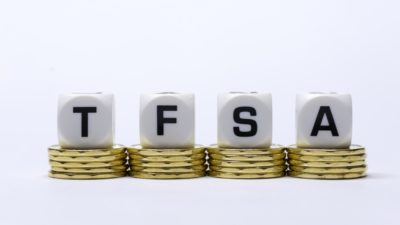The U.S. has raised interest rates twice this year, and signals coming out of the Bank of Canada suggest an increase might be in the cards before the end of 2017.
As rates rise, investors often flee dividend stocks, especially those found in the REIT and utility sectors, as they tend to rely heavily on debt.
Rising rates also increase the yield on GICs, which can compete with dividend stocks for yield-hungry, risk-averse funds.
Some sectors, however, tend to do well in an environment of rising rates. Insurance and banking are two of them.
Why?
Insurance companies have to keep a significant amount of cash available to cover potential claims. This money normally sits in fixed-income assets, which pay more as interest rates rise.
Banks also benefit when rates rise, as they tend to get a better return on the funds they set aside for customer deposits and normally see a stronger spread on loans.
Rates also tend to rise when the economy is doing well, which often means more demand for loans from businesses.
Let’s take a look at Sun Life Financial Inc. (TSX:SLF)(NYSE:SLF) and Bank of Nova Scotia (TSX:BNS)(NYSE:BNS) to see why they might be interesting picks.
Sun Life has insurance and wealth management operations in Canada, the United States, and Asia.
The global scope provides investors with an opportunity to get international exposure, especially in Asia, where Sun Life has partnerships and subsidiaries in countries such as India, Indonesia, the Philippines, Vietnam, Malaysia, and China.
The stock took a bit of a hit in recent months due to weak results in the U.S. operations. Investors will have to keep an eye on the next quarterly report to see of the situation was a blip or appears to be more significant.
Management can’t be too concerned, as Sun Life raised its dividend earlier this year.
The current distribution provides a yield of 3.8%.
Bank of Nova Scotia
Bank of Nova Scotia is Canada’s most international bank with the large part of its foreign operations located in Mexico, Peru, Chile, and Colombia.
These four countries represent the core of the Pacific Alliance, which is a trade bloc set up to promote the free movement of goods and services between member states. The region offers a huge opportunity as the middle class expands and demand rises for personal loans, credit cards, and investment products.
Bank of Nova Scotia is also positioned well to benefit on the commercial side, as businesses require cash-management services when conducting operations in the different markets.
Some investors are concerned that rising rates could trigger a housing crash in Canada. It’s true that Canadian consumers are carrying significant debt, and there is a risk of a housing pullback if rates rise too quickly.
Bank of Nova Scotia’s mortgage portfolio should be able to handle a downturn in house prices. As of the end of fiscal Q2 2017, 54% of the portfolio was insured and the loan-to-value ratio on the remaining mortgages was 51%.
The bank gets about 30% of its profit from the international banking operations, so there is a nice hedge against an economic downturn in Canada.
Bank of Nova Scotia’s dividend provides a yield of 3.9%.
Is one more attractive?
Both stocks should do well as interest rates rise.
A major meltdown in the Canadian housing market is not likely, so I would probably make Bank of Nova Scotia the first pick today.
That said, Sun Life is probably the safer choice if you think house prices could crash. At this point, however, I would wait to see if the U.S. issues are resolved at Sun Life before buying the stock.








